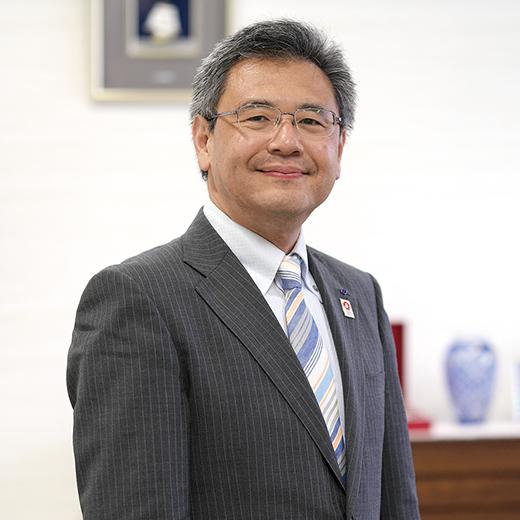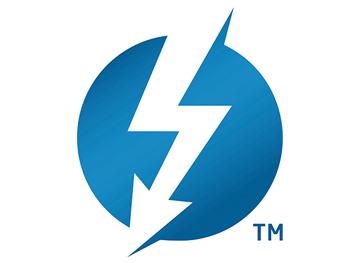
The Inside Story of the Development of Thunderbolt™
Thunderbolt™ 4 cable equipped with electronic circuitry to enable high-speed transmission
Sumitomo Electric's comprehensive strength in responding to Intel's requests
The Real Need Is Not Optical Fiber, It’s a High-Speed Interface

The Sumitomo Electric Group first became involved in the development of Thunderbolt™ back in 2009. At the time, Mitsuaki Tamura was a member of Optical Communications Laboratory and was promoting Sumitomo Electric’s intra-equipment optical fiber connection technology to businesses, mainly in Silicon Valley. During this time, he had the opportunity to give a presentation to Intel.
“At the time, there was momentum to transition intra-equipment highspeed signal wiring from copper to optical. We made a presentation on our optical wiring technology to Intel. Intel was studying optical interface as a next-generation communications protocol for PCs and showed great interest. This is how we started developing Light Peak, the predecessor to Thunderbolt™.” (Tamura)
Initially, the plan was to adopt an optical interface, but the situation changed during product development.
“Optical fiber connections are vulnerable to dust. There were concerns about their reliability for consumer use. Also, an optical interface costs more than one with copper. The decisive factor was our realization that Intel's true need was not to switch to optical fiber but to achieve a high-speed data transmission. Sumitomo Electric’s world-class micro-coaxial cable harness technology was used in the hinge assembly of mobile phones and notebook PCs. The company also had the ability to propose both copper and optical solutions. In this context, we proposed using micro-coaxial cables as Thunderbolt™ cables. The proposal was well received and helped us build a strong relationship with Intel.” (Tamura)
Relationships Built Through Thunderbolt™

Thus began the development of Thunderbolt™ cables, with the aim of creating a high-speed interface. A key challenge was improving the delay time difference in signal transmission that occurs between the two cores of a pair cable, known as “intra-pair skew.” The goal was to reduce this skew to as close to zero as possible. Another major challenge was to improve the phenomenon of sharp signal attenuation at certain frequencies. By overcoming these challenges one by one, we were able to create a high-speed interface with 20 Gbps bandwidth. In 2011, Thunderbolt™ cables were launched.

Mr. Jason Ziller, currently vice president and general manager of the Client Connectivity Division at Intel, served as the marketing leader during the early stages of Thunderbolt™ development and has worked closely with the Sumitomo Electric Group on a number of fronts.
“When we were considering whether to go with optical fiber or metal, we were amazed by the micro coaxial cable proposed by Sumitomo Electric. It promised the possibility of creating a high-speed interface using metal. Since then, they have become one of our leading partners in the Thunderbolt™ cable ecosystem, and we highly value their high level of technical expertise, as well as their diligence and commitment. Sumitomo Electric has built a really good relationship with Intel. We hope to continue this relationship in the future,” said Ziller.
Ziller predicts that the needs of e-sports and other gamers and digital creators, who are the core users in the Thunderbolt™ market, will continue to expand.
“Thunderbolt™ is simple yet highly engineered and reliable. The number of people needing it will surely grow. Wherever there is a PC, there is Thunderbolt™—that's the world we're aiming for," said Ziller.

The DisplayPort logo is a trademark or registered trademark of the Video Electronics Standards Association.
The Certified USB logo is a trademark or registered trademark of USB Implementers Forum, Inc.
The PCI Express logo is a trademark or registered trademark of PCI-SIG.
Registration of public notification
If you register your e-mail address, we will notify you when the latest issue is published. If you wish, please register from the registration form.
To delete your registration, please visit here.
